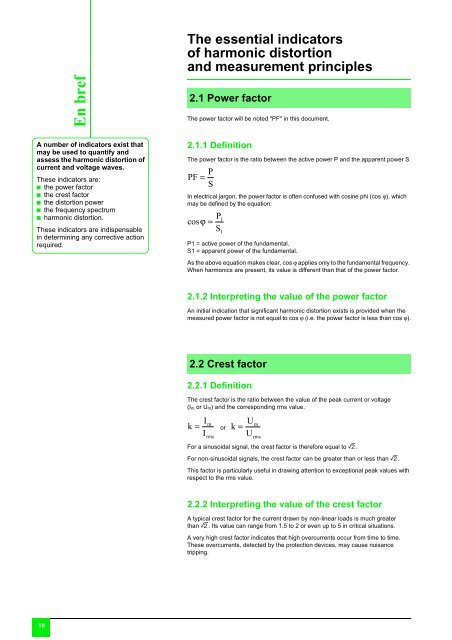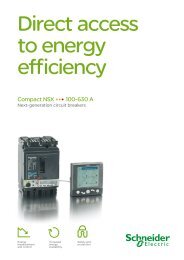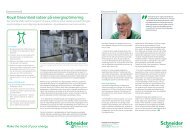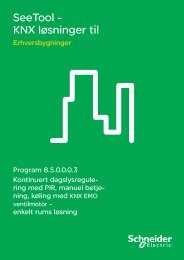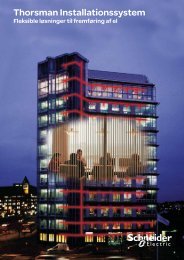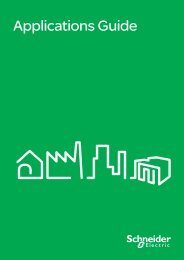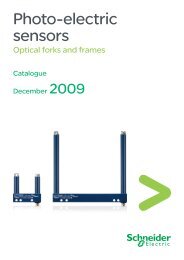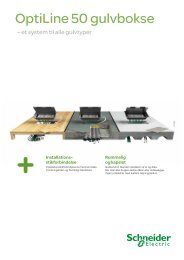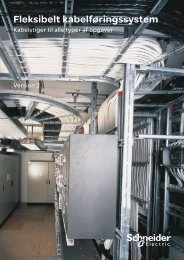Harmonic detection and filtering - Schneider Electric
Harmonic detection and filtering - Schneider Electric
Harmonic detection and filtering - Schneider Electric
Create successful ePaper yourself
Turn your PDF publications into a flip-book with our unique Google optimized e-Paper software.
En brefThe essential indicatorsof harmonic distortion<strong>and</strong> measurement principles2.1 Power factorThe power factor will be noted "PF" in this document.A number of indicators exist thatmay be used to quantify <strong>and</strong>assess the harmonic distortion ofcurrent <strong>and</strong> voltage waves.These indicators are:b the power factorb the crest factorb the distortion powerb the frequency spectrumb harmonic distortion.These indicators are indispensablein determining any corrective actionrequired.2.1.1 DefinitionThe power factor is the ratio between the active power P <strong>and</strong> the apparent power S.PFP=SIn electrical jargon, the power factor is often confused with cosine phi (cos ϕ), whichmay be defined by the equation:cosϕ = P S11P1 = active power of the fundamental.S1 = apparent power of the fundamental.As the above equation makes clear, cos ϕ applies only to the fundamental frequency.When harmonics are present, its value is different than that of the power factor.2.1.2 Interpreting the value of the power factorAn initial indication that significant harmonic distortion exists is provided when themeasured power factor is not equal to cos ϕ (i.e. the power factor is less than cos ϕ).2.2 Crest factor2.2.1 DefinitionThe crest factor is the ratio between the value of the peak current or voltage(I m or U m) <strong>and</strong> the corresponding rms value.kIm= or kIrmsU=UmrmsFor a sinusoidal signal, the crest factor is therefore equal to 2.For non-sinusoidal signals, the crest factor can be greater than or less than 2.This factor is particularly useful in drawing attention to exceptional peak values withrespect to the rms value.2.2.2 Interpreting the value of the crest factorA typical crest factor for the current drawn by non-linear loads is much greaterthan 2. Its value can range from 1.5 to 2 or even up to 5 in critical situations.A very high crest factor indicates that high overcurrents occur from time to time.These overcurrents, detected by the protection devices, may cause nuisancetripping.1010


